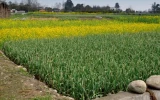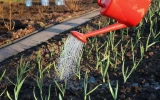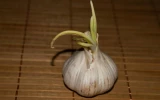Can You Grow Garlic in a Greenhouse? (How and When)
Growing garlic in a greenhouse is not only possible, but also a practical choice for many gardeners. This controlled environment allows for an extended growing season, offering protection from harsh weather conditions. In this article, we'll delve into the specifics of cultivating garlic within the confines of a greenhouse, focusing on the how-tos and optimal timing to ensure success.
Garlic can be grown in a greenhouse, allowing for year-round planting and harvesting. All you need to do is plant garlic cloves in pots with well-draining soil and ensure they receive enough sunlight. Plant in autumn for a summer harvest, or in early spring for a late summer harvest.
While garlic thrives in cooler temperatures, managing its growth cycle in the controlled environment of a greenhouse requires a bit of finesse, especially when it comes to planting times and temperature regulation. Let's dive deeper into the world of greenhouse garlic gardening.
Summary
- Garlic planting in a greenhouse offers flexible timing of planting due to controlled soil temperatures, thus extending the planting season with fall being optimal, winter for an extended growing season, and early spring as a viable option if fall is missed, albeit with a risk of smaller bulbs.
- Garlic cultivation in the greenhouse benefits from controlled conditions such as moderate lighting, optimal temperatures of 65-75°F, and humidity levels of 50-70%, with proper ventilation crucial to preventing humidity-related issues and fungal diseases.
- The greenhouse environment extends the garlic growing season for early planting and late harvesting, potentially enabling multiple annual harvests, and expanding the range of cultivable garlic varieties.
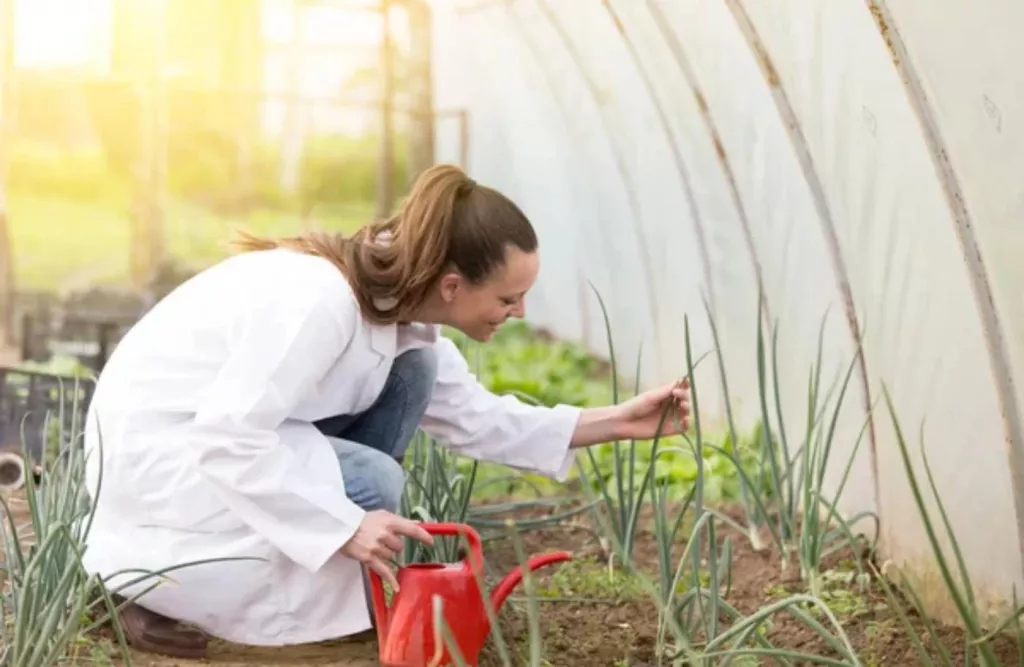
On this page:
How to Grow Garlic in a Greenhouse
Planting garlic in your greenhouse is a straightforward process that can yield great results. Start by selecting quality garlic cloves; it's preferable to use seed garlic from a reputable supplier to ensure good growth.
Prepare your soil to have a pH of around 6.8, which is ideal for garlic; you may wish to conduct a soil test for precise nutrient levels.
Here’s a simple step-by-step guide:
Soil preparation
- Ensure soil is rich and well-drained.
- Mix in organic matter like compost or manure before planting.
Planting tips
- Plant cloves root end down, about 2 inches deep.
- Maintain a gap of 4-6 inches between cloves.
- For rows, keep an 18-inch distance.
Apply mulch generously
After planting, cover the cloves with an organic mulch, such as straw, which helps with temperature regulation and moisture retention. Mulching is one of the few ways to boost profits in garlic farming.
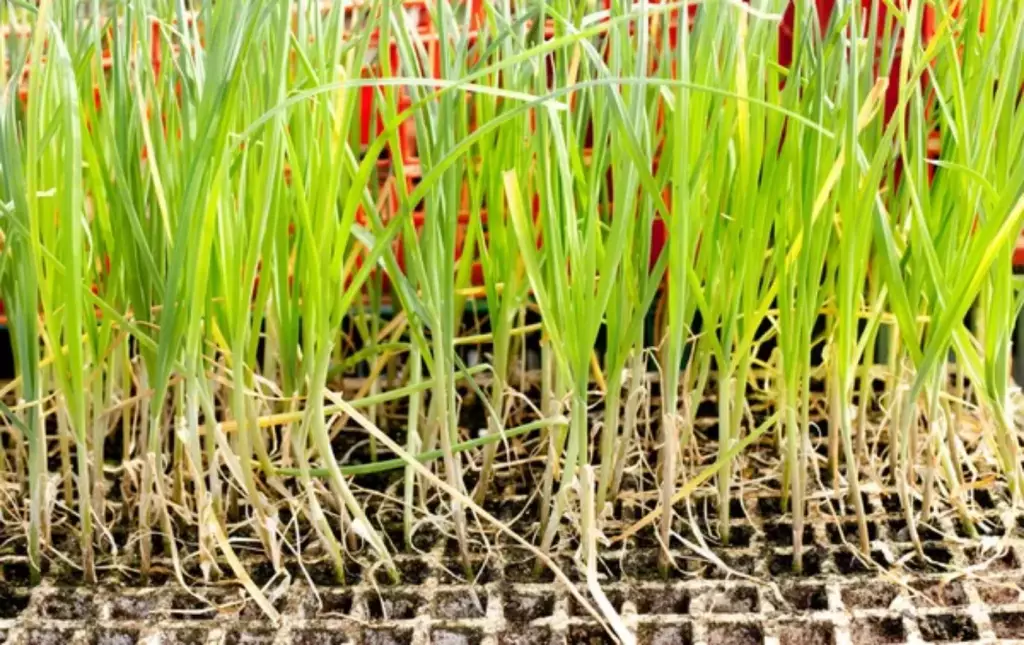
Lighting and temperature control
Garlic doesn’t require intense lighting, so natural greenhouse light is typically sufficient. Aim to keep temperatures between 65 and 75°F and humidity between 50 and 70%, using ventilation or automated systems to maintain these conditions.
Providing proper ventilation
Proper ventilation is crucial to prevent excessive humidity, which can lead to fungal diseases. Monitor the greenhouse environment and adjust ventilation as needed.
Remember, garlic rarely needs fertilizer, but a nitrogen-based one might boost your yield. Water your garlic plants regularly, keeping the soil moist but not soaked.
When to Plant Garlic in a Greenhouse
When considering the best time to plant garlic in a greenhouse, there are several factors to take into account.
Ideal planting conditions for garlic
Garlic thrives in a soil temperature range of 40 to 50°F (4 to 10°C). These conditions are typically found outdoors in the fall in many climates. Check out this article to learn more about the ideal growing conditions for garlic.
Planting garlic during this temperature range simulates its natural growth cycle, which includes a vernalization period—a cold spell that is necessary for garlic to develop bulbs.
In a greenhouse, you can maintain these soil temperatures artificially, even during winter, provided the soil isn't frozen. This flexibility allows for an extended planting season.
| Planting Season | Advantages | Drawbacks |
|---|---|---|
| Fall | Aligns with garlic's natural cycle, leading to spring/summer harvest. | Not ideal for very cold regions without proper heating. |
| Winter | Extends growing season; starts growth early for spring. | Requires careful soil temperature control; risk of inadequate cold period. |
| Early Spring | Option for missed fall planting; can still yield harvest. | Might result in smaller bulbs due to insufficient cold period. |
Planting garlic in the fall
In regions with mild winters, garlic can be planted in the fall, just as you would outdoors. This allows for a natural growth cycle with harvest in late spring or early summer.
Planting garlic in winter
In colder regions, planting can occur during winter inside a greenhouse, as long as you maintain the soil temperature within the ideal range. This is advantageous for getting a head start on the growing season or for growers looking to spread out their workload.
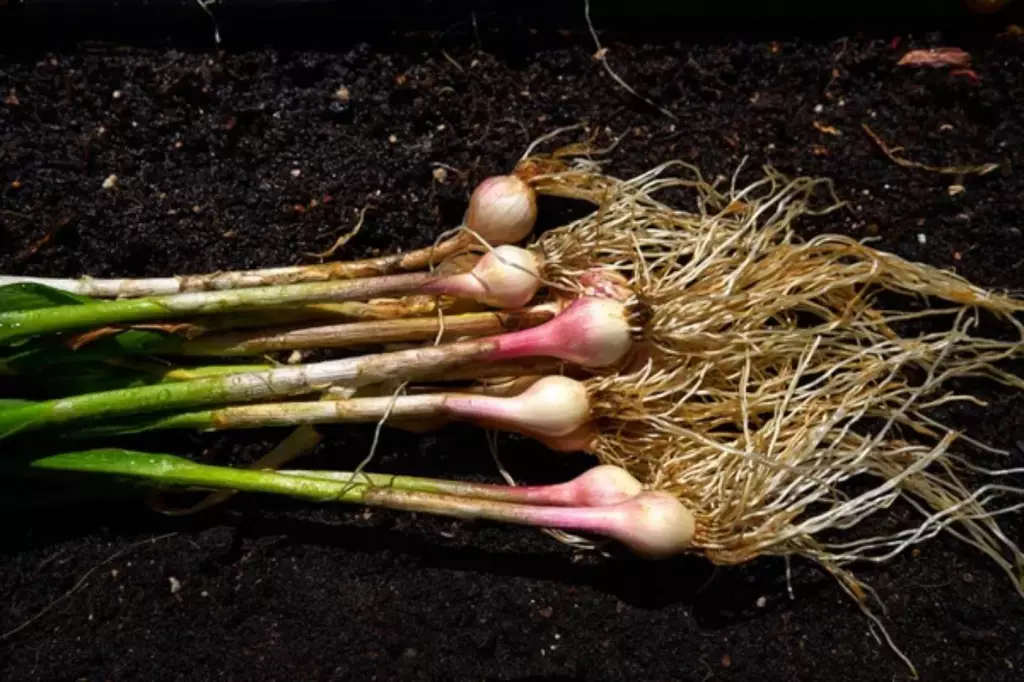
Early spring garlic planting
If you missed the fall planting window, you could still plant garlic in early spring in a greenhouse. However, spring-planted garlic may not have enough time to vernalize, which could result in smaller bulbs or cloves that do not separate properly.
How Long Does Garlic Take to Grow in a Greenhouse?
When growing garlic in your greenhouse, the time until harvest can vary. Typically, you're looking at about 6-9 months for a complete growth cycle, from planting to harvesting.
If you start with pre-planted cloves, you'll see the green shoots poking through the soil usually within a couple of weeks. For them to reach a stage where they are ready for harvest, it will take longer—closer to the aforementioned 6-9 months.
| Stage | Duration |
|---|---|
| Germination | 7-14 days |
| Leaf formation | 30 days |
| Bulb development | 5-8 months |
Cooler temperatures in the greenhouse can slow growth, while warmer, more stable environments can encourage quicker growth.
It's important to check your garlic regularly as it develops. When the lower leaves start to brown, it’s a good indicator that your garlic is nearly ready to be harvested.
However, if the plant is turning yellow, it must be a sign of an underlying issue. You can read this article for more information on the possible causes of a garlic leaf turning yellow.
Make sure not to water your garlic for a few weeks before you plan to harvest to allow the bulbs to firm up.
Benefits of Growing Garlic in a Greenhouse
Growing garlic in a greenhouse offers you control over the environment and can lead to healthier plants and better yields. You can say goodbye to many of the challenges you'd face in an outdoor garden.
It offers an optimal growing climate
In your greenhouse, you control the temperature and humidity levels, creating an optimal climate for your garlic. This means you can ensure that the conditions are just right for garlic, which thrives in a space where the temperature doesn't fluctuate too wildly.
Keeping your greenhouse's climate stable can result in larger and more flavorful bulbs.
It helps prevent pests and diseases
The enclosed space of a greenhouse offers superior pest and disease control. It keeps most garden pests like aphids and mites away from your garlic, reducing the need for chemical pesticides.
Similarly, the controlled environment can help to prevent many fungal diseases, keeping your garlic plants robust and healthy.
It gives way to extending the growing season
One of the greatest advantages of using a greenhouse is the ability to extend the growing season. You can plant garlic earlier in the year and harvest later than you would be able to outdoors, potentially leading to multiple harvests per year.
By staggering the planting of your garlic cloves, you'll have a continuous supply of fresh garlic ready at your fingertips.
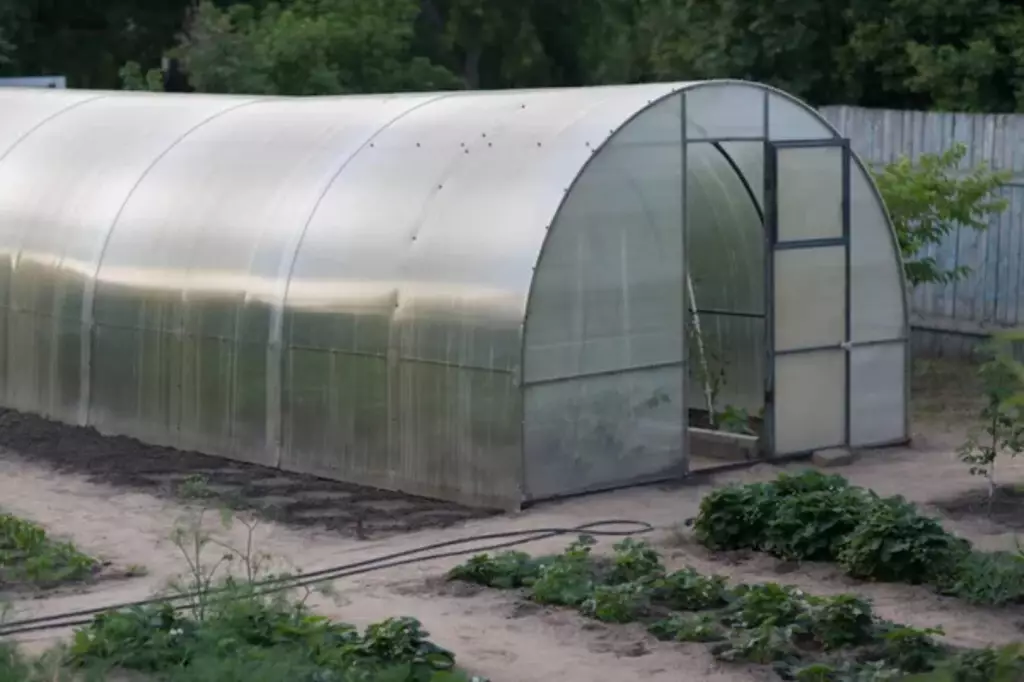
Best Garlic to Grow in a Greenhouse
When choosing the best garlic to grow in your greenhouse, consider hardneck varieties. Hardneck garlic has a stiff central stalk, making it sturdier and suitable for the varying conditions inside a greenhouse.
Garlic scapes, which are flower stalks, emerge from hard necks and can be a bonus yield.
Softneck garlic varieties are also an option. They typically store better and can be more heat-tolerant. However, your choice may hinge on your local climate outside the greenhouse and your preference for garlic flavor or bulb size.
Here's a quick guide to assist you:
| Garlic Type | Climate Suitability | Features | Yield Characteristics |
|---|---|---|---|
| Hardneck | Colder climates | - Sturdier with a stiff central stalk | - Richer flavors |
| - Produces garlic scapes (flower stalks) | - Bonus yield from scapes | ||
| Softneck | Warmer areas | - More heat-tolerant | - Yields more cloves |
| - Better storage capability | - Easier to braid |
Remember, your greenhouse's environment – controlled temperature, humidity, and light conditions – can expand your choices beyond what's typically recommended for outdoor gardening.
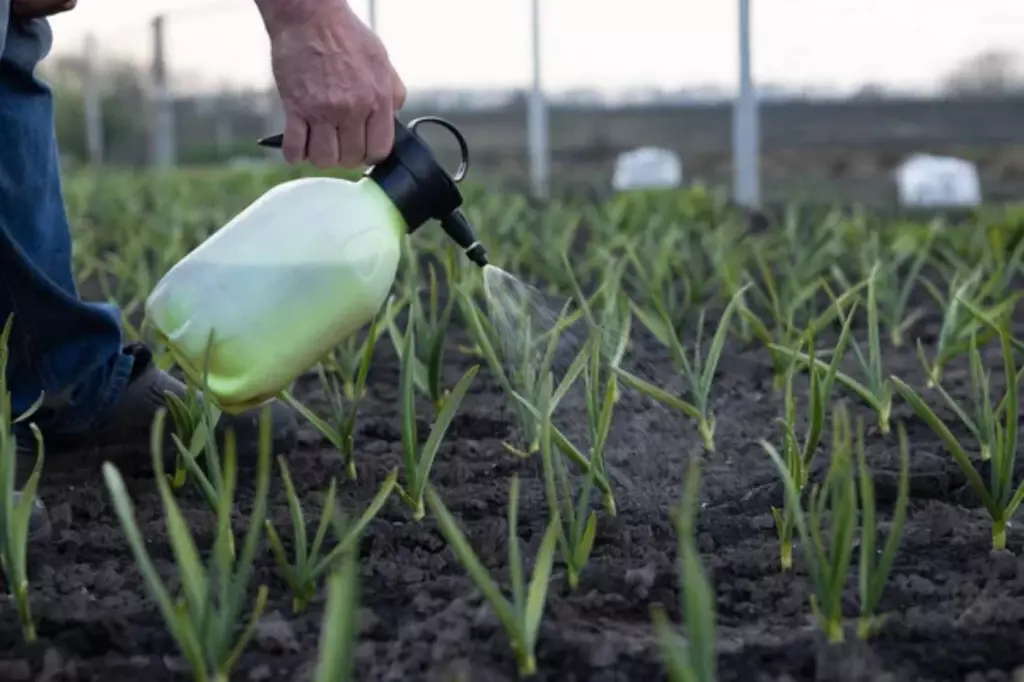
Keep your greenhouse conditions around 65-75°F and 50-70% humidity for optimal growth. Adjust based on your garlic's growth stage, but generally, maintain a soil pH of around 6.8.

